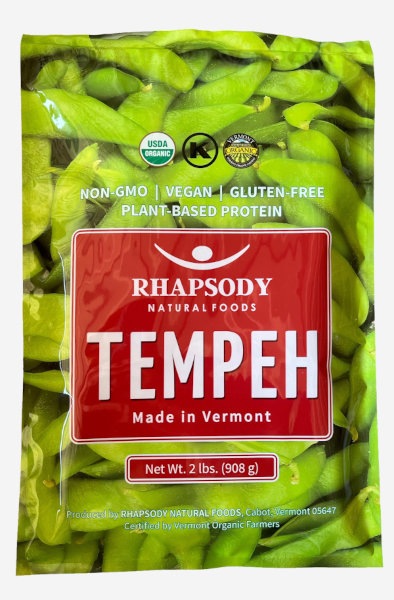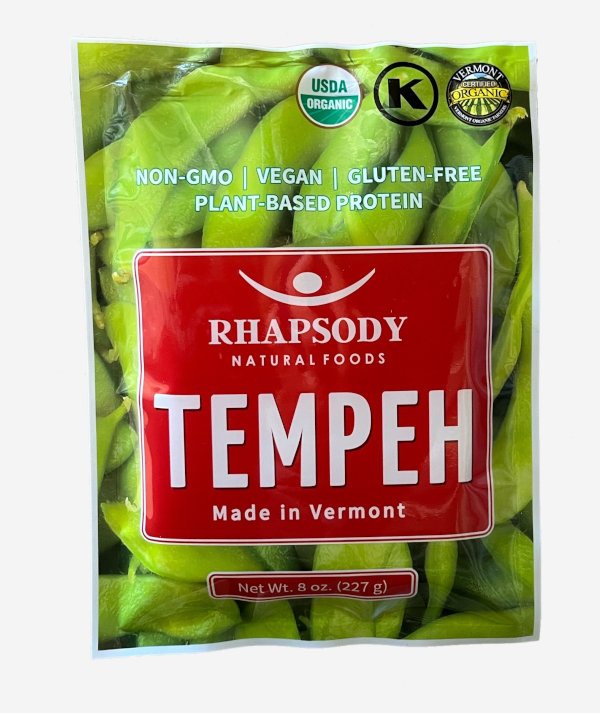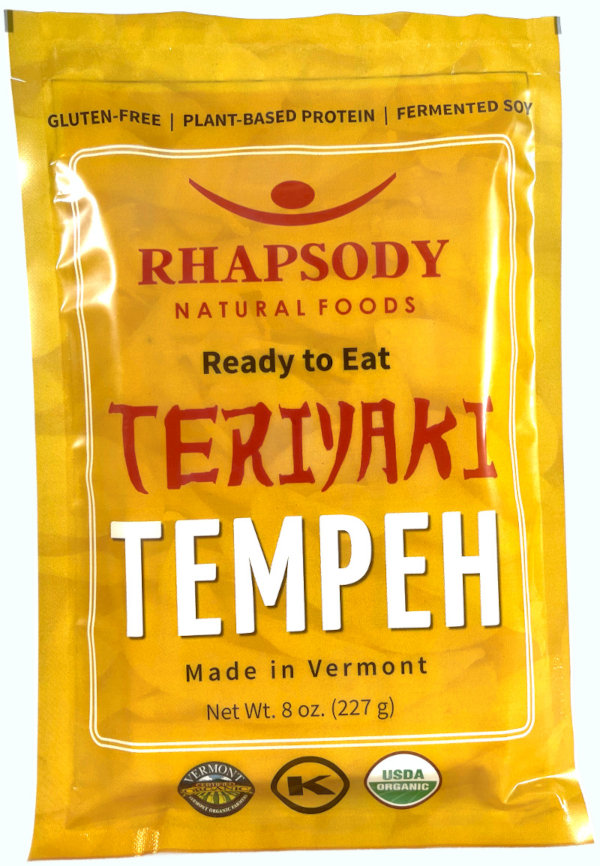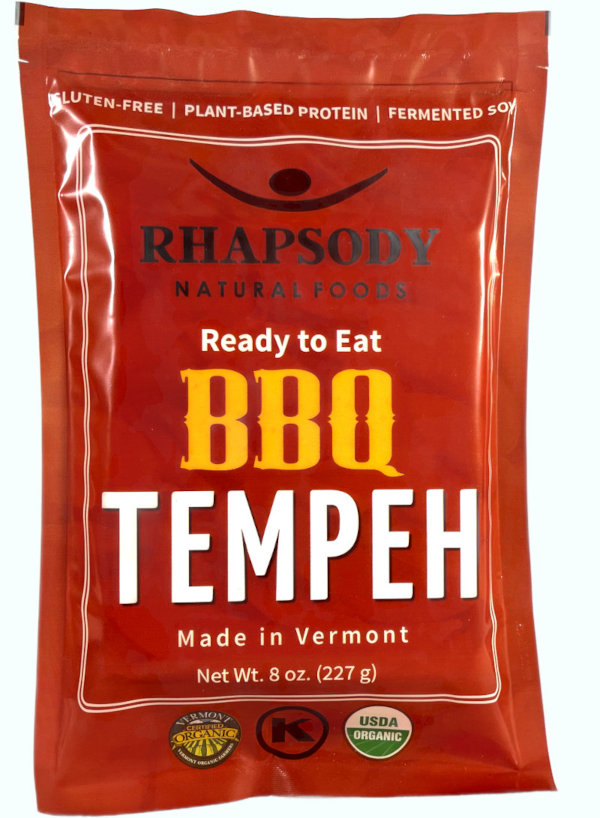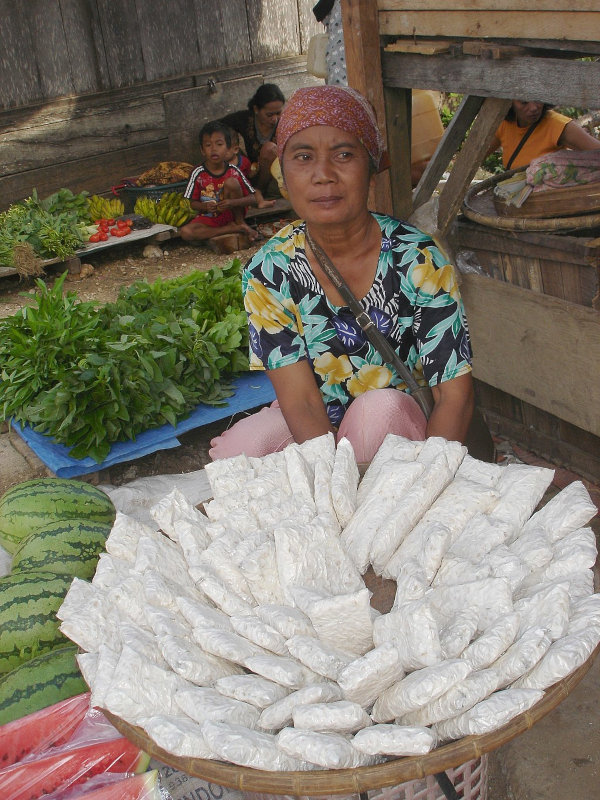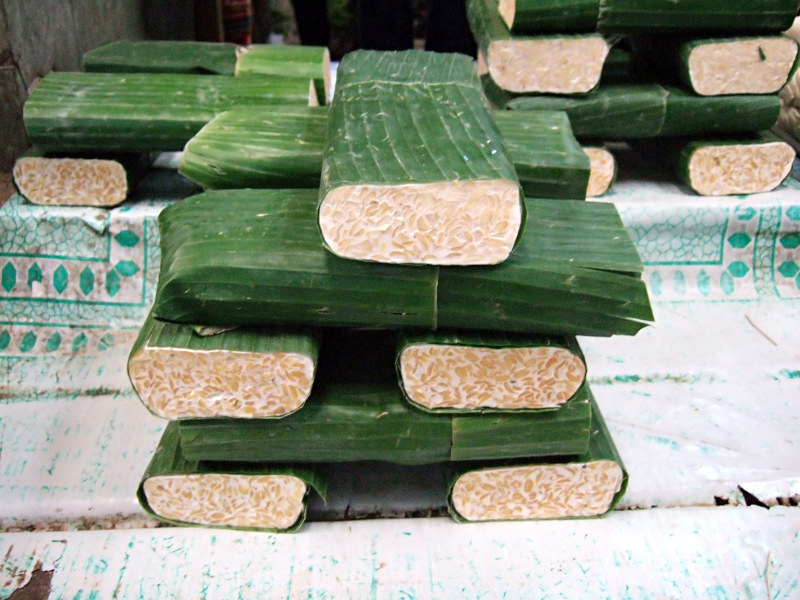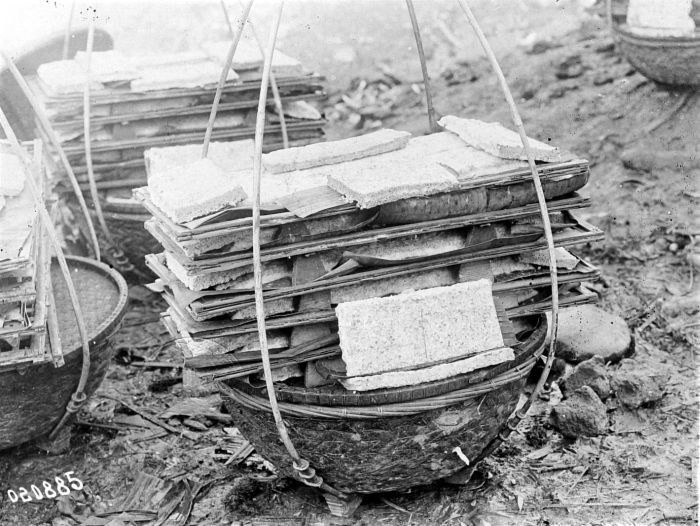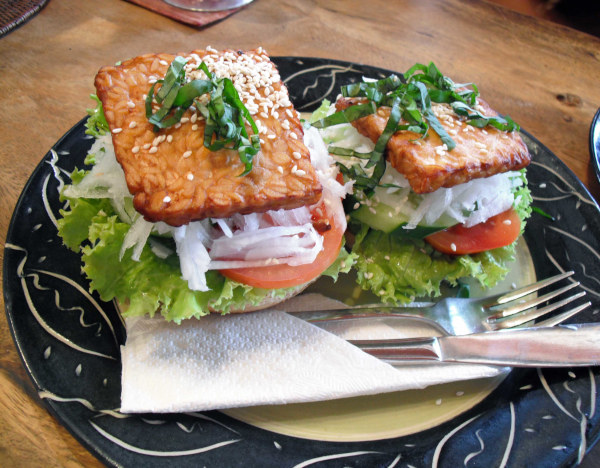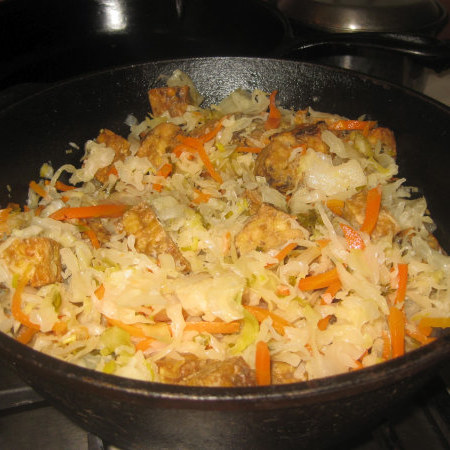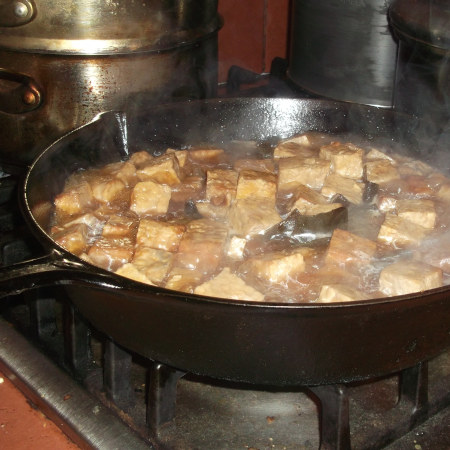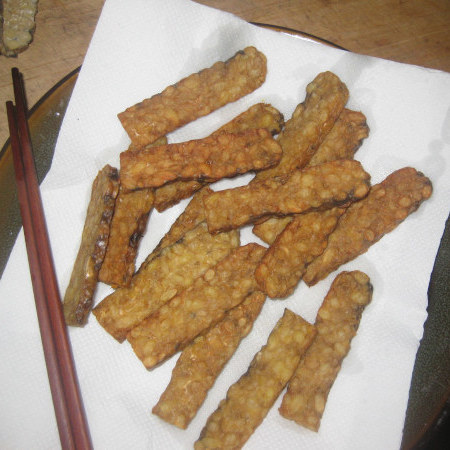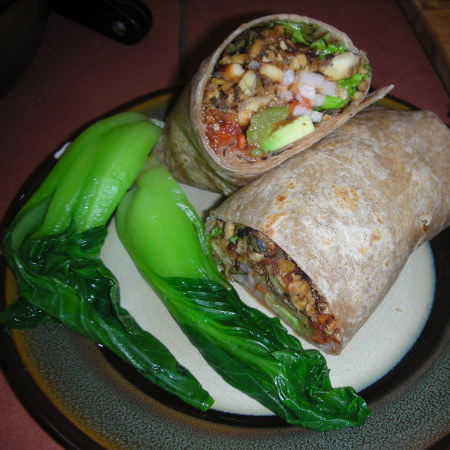
Tempeh
What is Tempeh?
Tempeh (pronounced tèm-pay) is a traditional, cultured soyfood from Indonesia.
Tempeh is among the best providers of easy to digest high-quality plant-based protein. It is low in saturated fats; free of cholesterol; and a good source of B vitamins and minerals.
The culturing process transforms the soybeans into a new food, called tempeh. To see how tempeh is made click here.
The Fermentation Process
Tempeh in essence is a food that has gone through two distinct fermentation processes. After washing to remove dirt and foreign matter soybeans are soaked overnight at ambient temperature. During this time the soybean soaking water starts to turn sour. This inhibits the growth of unwanted organisms and creates an acidic environment the mold thrives in.
Next, the beans are steamed or boiled for just a while to keep them firm. This happens in an open pot of boiling water or in a steamer. At Rhapsody, we steam to retain as much of the nutrients as possible.
Since the mold likes a humid though not wet growth medium these beans are dried superficially and cooled down to about 90°F. The mold culture is added and mixed in very well.
The Rhizopus culture needs air to grow so the inoculated beans are wrapped in hibiscus, bamboo, or another kind of leaves and put in an incubator where the temperature is kept steady at 85-90°F for about 30 hours. It is important that the beans don’t dry out so care is taken to keep a humidifier in the room or to use perforated plastic bags with needle pin holes 3⁄4” apart. After 12 hours a dim blanket of white mold should have appeared, getting more pronounced as time passes. When the tempeh is completely white and holds like a firm brick, it’s done. To ripen it off even more you can keep it at 60-70°F for another 12 hours or so. When black spots appear and the white turns yellowish, it’s time to refrigerate it or steam it for 10 minutes to stop the fermentation.
It’ll keep up to 3-4 days in your fridge unpasteurized and freezes well for much longer shelf life.
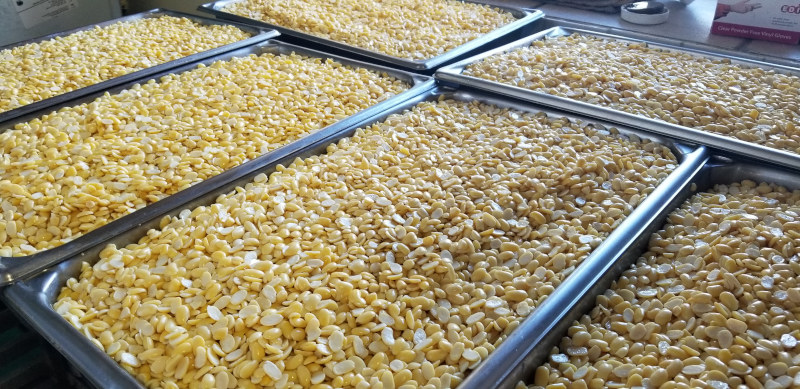
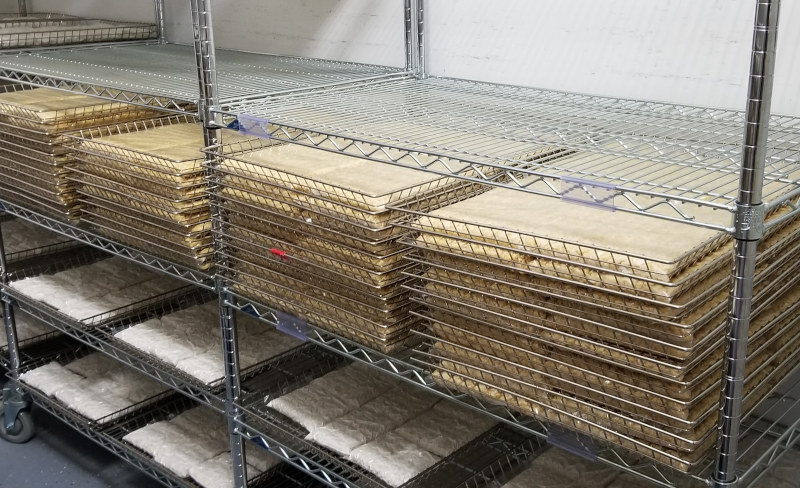
The Story of Tempeh
Indonesia is considered the birthplace of tempeh, many centuries ago. This hot and humid country is a perfect environment for Rhizopus mold cultures to flourish.
It is not a far stretch of the imagination to see how this mold ended up on steamed beans that were left wrapped up in a hibiscus leaf spontaneously produced tempeh. Basically, that is how tempeh has been made ever since its first appearance ages ago. Wash, soak, steam, inoculate, and incubate soybeans in an airy wrapper; that’s the tempeh process in a nutshell.
For a detailed description of how to make your own tempeh go here. (Page under construction. Please check back soon.)
As you can see here, tempeh is a great source of a large variety of vitamins, minerals, and trace elements. The fermentation results in textural changes in the beans, pleasant flavor and aroma develop, and the nutritional value increases.
Because it has been fermented, the protein, carbohydrates, and fats are much easier to absorb by our bodies. Therefore, although a bean-based food, it does not behave the same way as regular cooked beans of any kind; it’s gentler on our digestive system. In addition, the fibrous hulls are removed, which is necessary for the Rhizopus mold to penetrate the cooked soybeans.
Frequently Asked Questions About Tempeh
What are those dark spots on tempeh?
The black spots are spores created by the mycelium that grows on the soybeans that have been inoculated by Rhizopus Oligosporus spores. These spots indicate that the tempeh has fermented to its peak.
Tempeh is made by letting the Rhizopus Oligosporus mold do its work. This culture multiplies and spreads throughout the cooked beans by means of the mycelium it forms, creating the typical white cotton ball-look of fresh tempeh. This mold excretes enzymes which digest the beans. Carbohydrates, protein, and fat are all broken down. At a certain point, the mold reaches its maximum growth and signals that it’s time to create spores—just like plants eventually go from flower to seed. These spores are black spots.
They are harmless, do not affect the flavor, and are just an indication that the tempeh was well fermented.
Can I freeze tempeh?
Yes! Tempeh freezes very well up to a year.
Tip: You can buy 2-pound packages of tempeh (saving money in the process), cut them up, place them in a sealed container, freeze them, and use them as needed.
What about phytic acid in tempeh?
Phytic acid is a compound that chelates and is thus a double-edged sword: it is thought to prevent the absorption of iron, zinc, phosphorus, and calcium and magnesium by bonding to it, as well as to a lesser degree, help in the removal of heavy metals from the body. Quantities of phytic acid are found in grains, beans, nuts, and seeds, including soy and rice.
Phytic acid is broken down by phytase, a digestive enzyme released by Aspergillus oryzae (a koji mold) and Rhizopus oligosporus (tempeh’s main mold). Studies have shown that products fermented using these molds have a significantly reduced level of phytic acid. Much is still unknown about phytic acid. That is why a safe approach is to consume a traditional balanced diet consisting of a large variety of home-grown and home-made organic foods, including fermented foods.
Let’s have some common sense of faith in our ancestors and not throw away the baby with the bathwater!
Tip to neutralize phytic acid: Add some broken up koji to your grains, beans, nuts, or seeds if you decide you need to soak them overnight to enhance the break down of phytic acid, by using the phytase present in the koji.
Does Rhapsody Tempeh have vitamin B12 in it?
An independent lab analyzed a sample of our Rhapsody tempeh and found 0.44 mcg/100g of vitamin B12. Although the daily recommended allowance for this vitamin for adults is 2.4 mcg, which means you have to eat more tempeh than you probably want to or should, it helps you get to your daily dose. There is, however, still much unknown about vitamin B12 available in the different kinds of foods, resulting in much disagreement about what type and how much is best for us. One thing we do know: if the soil you grow your food lacks cobalt (an essential part of B12), it cannot create foods that contain it.
Does Rhapsody Tempeh have any grains in it?
There are no whole cooked grains in Rhapsody tempeh as some other brands have. However, the Rhizopus mold we use is grown on whole rice kernels. This is a traditional practice when making a tempeh starter worldwide. Rice flour is then added to the blended up starter as a dispersant. Our tempeh contains about 0.5% tempeh starter. The reason why rice is not listed as an ingredient is that the FDA considers it a processing aid in this context, and therefore it does not need to be listed on labels.

